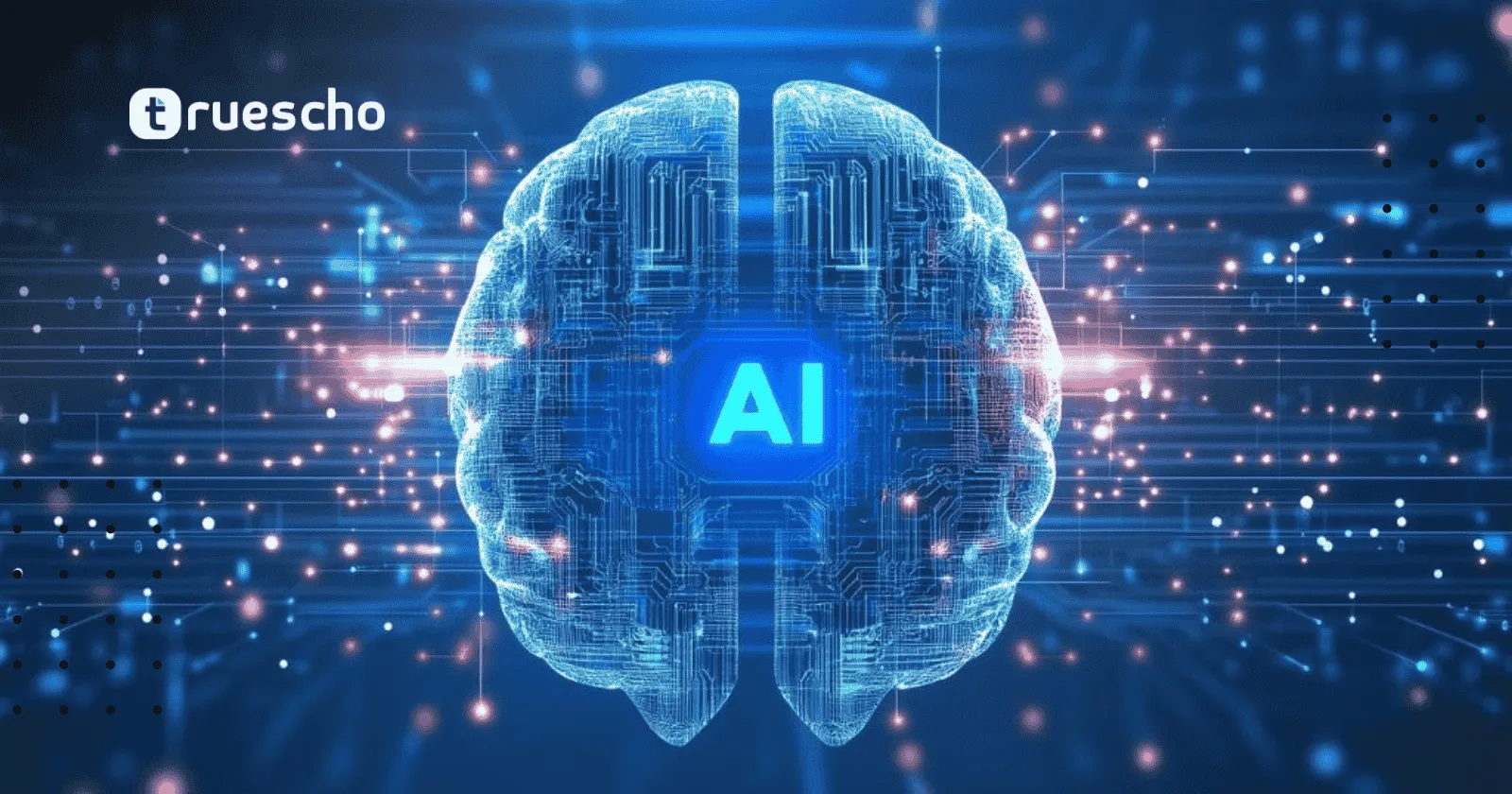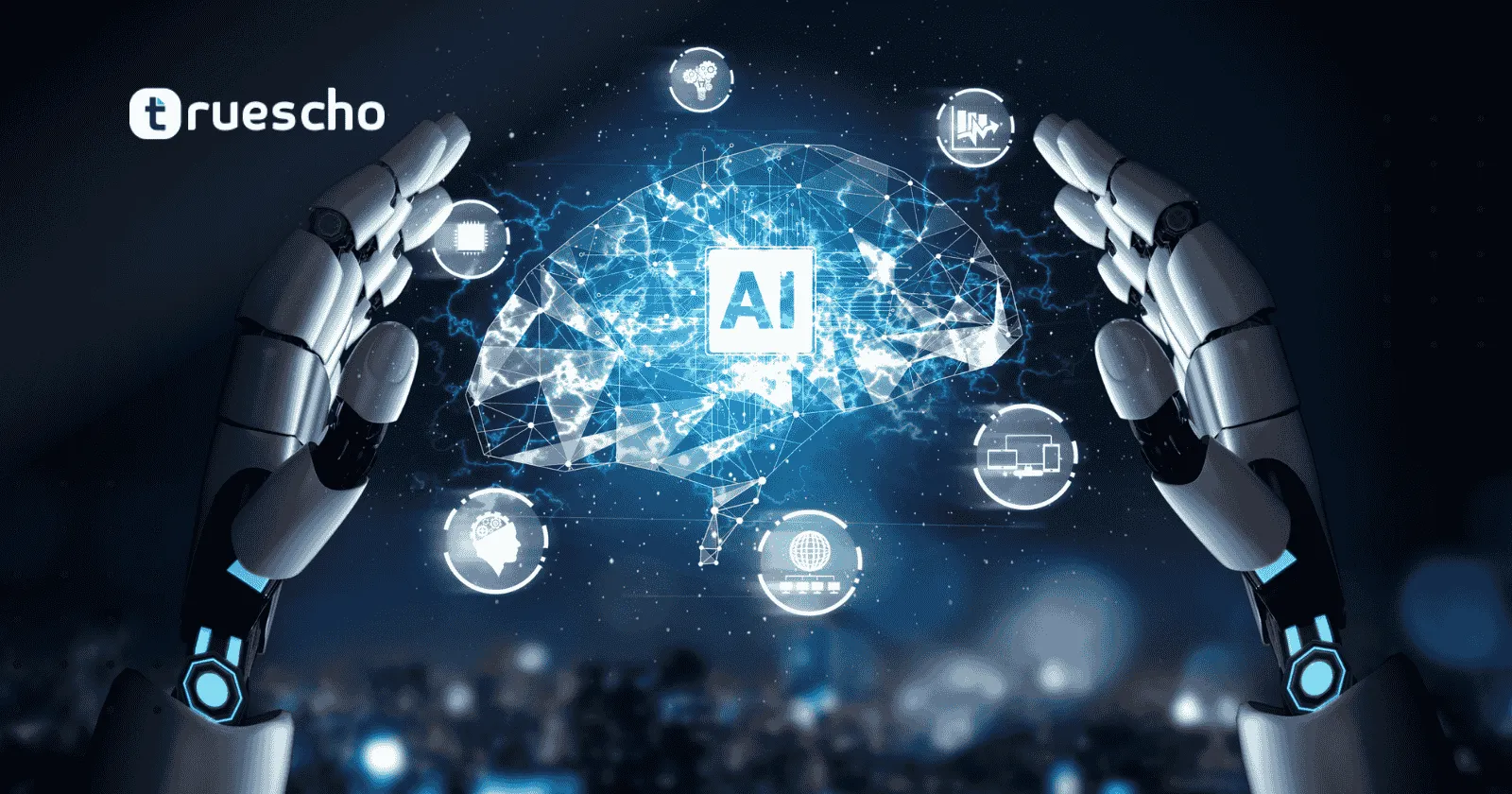اتجاهات الذكاء الاصطناعي: 5 ثورات مثيرة في Vibe Coding
جدول المحتويات
- 1 اتجاهات الذكاء الاصطناعي الناشئة وصعود Vibe Coding
- 2 إحداث ثورة في ألعاب 3D من خلال اختراقات “Vibe Coding”
- 3 Anthropic Harmony: تعميق تكامل الذكاء الاصطناعي مع سير عملك
- 4 الاستفادة من Open AI وبيانات حقوق النشر للنماذج المتقدمة
- 5 التقدم في نماذج الذكاء الاصطناعي الصينية والمقارنة المعيارية التنافسية
- 6 Google AI Studio والاختراق في توليد الصور
- 7 الابتكارات في الكتابة الإبداعية بالذكاء الاصطناعي وإنشاء المحتوى
- 8 وسائل التواصل الاجتماعي المدعومة بالذكاء الاصطناعي ومستقبل المنصات التفاعلية
- 9 الخلاصة
اتجاهات الذكاء الاصطناعي الناشئة وصعود Vibe Coding
أصبح مفهوم “Vibe Coding” أحد أسرع الاتجاهات نموًا في جميع أنحاء النظام التقني. على عكس طرق البرمجة التقليدية، يستغل “Vibe Coding” الذكاء الاصطناعي لتوليد الأصول وإنشاء تطبيقات تفاعلية وحتى بناء بيئات ألعاب كاملة. تعمل ثورات “Vibe Coding” الحالية على تغيير كيفية تطوير التطبيقات، مما يمكّن المطورين والمبدعين من تسريع عملية الإنتاج والتركيز بشكل أكبر على الإبداع.
أظهرت العروض التوضيحية الحديثة كيف يمكن للذكاء الاصطناعي توليد أصول ألعاب ثلاثية الأبعاد وإنشاء بيئات تفاعلية باستخدام أدوات مثل Blender، وحتى تحويل الشخصيات ثنائية الأبعاد إلى نماذج ثلاثية الأبعاد متحركة بالكامل. تُعد هذه التطورات جزءًا من اتجاهات الذكاء الاصطناعي الأوسع التي تجعل التكنولوجيا أكثر سهولة وابتكارًا. مع استمرار نضوج “Vibe Coding”، يعتقد العديد من الخبراء أن قدراته ستحل قريبًا محل العديد من جوانب البرمجة اليدوية بمحتوى سلس يولد بواسطة الذكاء الاصطناعي.
إحداث ثورة في ألعاب 3D من خلال اختراقات “Vibe Coding”
يظهر أحد أكثر تطبيقات اختراقات “Vibe Coding” إثارة في صناعة الألعاب. أصبح بإمكان المطورين الآن استخدام الذكاء الاصطناعي لإنشاء ألعاب ثلاثية الأبعاد غامرة بسرعة. على سبيل المثال، تسمح الأدوات الحديثة للاعبين بتوليد مشاهد ألعاب كاملة بمجرد توفير مطالبات نصية. تتضمن العملية ما يلي:
- توليد أصول مفصلة في Blender باستخدام كود مدعوم بالذكاء الاصطناعي.
- تحويل الصور ثنائية الأبعاد إلى نماذج ثلاثية الأبعاد بأقل تدخل يدوي.
- دمج هذه الأصول في منصات ألعاب تعتمد على الويب مثل تلك المبنية باستخدام 3.js.
في حين أن الخطوات المتعددة غالبًا ما تكون مطلوبة (على سبيل المثال، تحويل الملفات من .glb إلى .fbx واستيراد البيانات إلى أدوات الرسوم المتحركة)، فإن العملية الشاملة مبسطة بواسطة الذكاء الاصطناعي، والذي كان سمة مميزة لاتجاهات الذكاء الاصطناعي اليوم. تعمل التكنولوجيا المتطورة على تمكين المبدعين من إنتاج تجارب ألعاب تفاعلية في جزء صغير من الوقت المطلوب تقليديًا.
اقرأ أيضا: مقاطع يوتيوب القصيرة الآلية
Anthropic Harmony: تعميق تكامل الذكاء الاصطناعي مع سير عملك
من التطورات الجديرة بالملاحظة الأخرى في عالم اتجاهات الذكاء الاصطناعي ميزة Harmony من Anthropic. تمنح هذه الأداة أنظمة الذكاء الاصطناعي وصولاً متحكمًا فيه إلى الدلائل المحلية، مما يسمح لها بالبحث والتشغيل داخل المحتوى الخاص بها بسلاسة. باستخدام Harmony، يمكن للمستخدمين توجيه الذكاء الاصطناعي الخاص بهم ليس فقط لتلخيص الملفات ولكن أيضًا لإنشاء المستندات وتعديلها وإدارتها مباشرة على أنظمتهم.
يهدف نهج Anthropic إلى سد الفجوة بين عمليات سطح المكتب ونماذج الذكاء الاصطناعي المستندة إلى السحابة. من خلال دمج واجهات برمجة التطبيقات (APIs) وأدوات المطور الأخرى، تعمل Harmony على تبسيط مهام مثل:
- توليد وثائق المشروع.
- إنشاء تقارير من مصادر بيانات محددة.
- إدارة أنظمة الملفات بشكل استباقي بأقل تدخل يدوي.
لمزيد من المعلومات حول عمل Anthropic المستمر، يمكنك زيارة موقعهم الرسمي على الويب على anthropic.com.
عزز إنتاجيتك في مجال الذكاء الاصطناعي
اكتشف كيفية تحسين عمليتك الإبداعية باستخدام أدوات الذكاء الاصطناعي المتقدمة. استكشف الحلول المبتكرة على AR Writer AI واختبر زيادة ثورية في الإنتاجية.
الاستفادة من Open AI وبيانات حقوق النشر للنماذج المتقدمة
في الأشهر الأخيرة، دفعت شركات رائدة مثل OpenAI وGoogle من أجل إجراء تغييرات تشريعية للسماح بتدريب الذكاء الاصطناعي على المحتوى المحمي بحقوق الطبع والنشر. تتمثل حجتهم في أن الوصول غير المقيد إلى البيانات المتنوعة أمر بالغ الأهمية للحفاظ على ميزة تنافسية في ساحة اتجاهات الذكاء الاصطناعي سريعة التطور. الاقتراح هو أن الفشل في تأمين أحكام الاستخدام العادل يمكن أن يمنح مزايا كبيرة للمنافسين الدوليين.
يسلط موقف OpenAI الضوء على أهمية القدرة على تدريب النماذج على مجموعة واسعة من النصوص عالية الجودة، والتي يمكن أن تؤدي بدورها إلى تحسينات كبيرة في القدرة على توليد الكتابة الإبداعية ومهارات حل المشكلات. لمزيد من التفاصيل حول مبادرات OpenAI، يرجى زيارة openai.com.
“إن السماح لشركات الذكاء الاصطناعي بالوصول إلى مجموعة بيانات شاملة ليس مجرد استراتيجية للشركات – إنه مسألة ذات أهمية وطنية في السوق العالمية التنافسية دائمًا.” – قيادي في الصناعة
التقدم في نماذج الذكاء الاصطناعي الصينية والمقارنة المعيارية التنافسية
تشهد نماذج الذكاء الاصطناعي الصينية تقدمًا سريعًا، حيث تستثمر الشركات بكثافة في البحث والتطوير. قدمت الإصدارات الأخيرة من مختلف الشركات الصينية نماذج تنافس تلك الخاصة بنظيراتها الغربية من حيث الجودة والأداء. تُعد هذه التطورات جزءًا رئيسيًا من اتجاهات الذكاء الاصطناعي الحالية، حيث إنها توضح السباق العالمي لبناء أنظمة ذكاء اصطناعي أكثر كفاءة وسهولة في الوصول إليها وتنوعًا.
تتضمن بعض النماذج المتطورة الناشئة من الصين أنظمة قائمة على التفكير وأنظمة توليد الصور والتي تقدم أسعارًا وأداءً تنافسيين. تدفع التطورات مثل هذه الصناعة بأكملها إلى الابتكار بشكل أسرع، مما يضمن بقاء اختراقات “Vibe Coding” وغيرها من تطورات الذكاء الاصطناعي في طليعة التقدم التكنولوجي.
اقرأ أيضا: الذكاء الاصطناعي التوليدي في AWS
Google AI Studio والاختراق في توليد الصور
تواصل Google تحديد معايير جديدة من خلال أحدث نموذج صور يعمل بالذكاء الاصطناعي المتاح على Google AI Studio. توفر هذه الأداة للمطورين إمكانية الوصول التجريبي إلى تقنية توليد الصور الأصلية، مما يتيح تعديلات صور يتم التحكم فيها بدرجة عالية. يمكن للمستخدمين تحميل صورة وتوفير مطالبات تفصيلية لتعديل السمات مع الحفاظ على سلامة الصورة الأصلية.
على سبيل المثال، أظهرت إحدى العروض التوضيحية كيف يمكن لمدخلات بسيطة أن تغير بنجاح لون قطعة ملابس مع الحفاظ بسلاسة على وجه الموضوع وسياقه. هذه الوظيفة الدقيقة هي دليل على القفزة الكبيرة في اتجاهات الذكاء الاصطناعي اليوم. بالنسبة لأولئك المهتمين باستكشاف إمكانات هذا النموذج، تفضل بزيارة صفحة Google AI الرسمية على ai.google.

الابتكارات في الكتابة الإبداعية بالذكاء الاصطناعي وإنشاء المحتوى
هناك مجال آخر يحقق فيه اتجاهات الذكاء الاصطناعي تقدمًا ملحوظًا وهو الكتابة الإبداعية. ركزت التطورات الأخيرة على تدريب النماذج خصيصًا لتوليد المحتوى الإبداعي. تم بناء هذه النماذج لإنتاج روايات ميتا-خيالية وأدبية تلتقط المشاعر الإنسانية المعقدة مثل الحزن والفرح، مما يوفر بعدًا جديدًا للكتابة بالذكاء الاصطناعي.
يعالج هذا الاتجاه بعض الانتقادات الشائعة حول الكتابة التي يولدها الذكاء الاصطناعي، وخاصة الميل إلى إنتاج لغة مُعقمة أو لغة الشركات. من خلال التدريب على مجموعة متنوعة من النصوص عالية الجودة، يهدف المطورون إلى تمكين أنظمة الذكاء الاصطناعي التي تفهم حقًا فن التعبير الإبداعي مع الحفاظ على التواصل الواضح والفعال.
وسائل التواصل الاجتماعي المدعومة بالذكاء الاصطناعي ومستقبل المنصات التفاعلية
تشهد أيضًا عملية دمج الذكاء الاصطناعي في منصات التواصل الاجتماعي تحولاً كبيرًا. تسمح الميزات المبتكرة للمستخدمين بالتفاعل مع وكلاء الذكاء الاصطناعي الذين يوفرون معلومات سياقية ويجيبون على الأسئلة وحتى يشاركون في المناقشات. يمثل هذا التطور انحرافًا كبيرًا عن وظائف وسائل التواصل الاجتماعي التقليدية من خلال تضمين اتجاهات الذكاء الاصطناعي مباشرة في تجربة المستخدم.
على سبيل المثال، تتيح وظائف الوسائط الاجتماعية الجديدة استخلاص السياق في الوقت الفعلي من محتوى الفيديو والمطالبات النصية، مما يسهل على المستخدمين الانخراط في محتوى الوسائط المتعددة بطريقة ذات مغزى. إن القدرة على الوصول إلى رؤى يولدها الذكاء الاصطناعي مباشرة من خلال تعليقات الوسائط الاجتماعية أو الوكلاء المتكاملين تمهد الطريق لمشهد رقمي أكثر سهولة وتفاعلية.
اقرأ أيضا: انتهاك جوجل لقانون الأسواق الرقمية
الخلاصة
تُبشر الموجة الحالية من اتجاهات الذكاء الاصطناعي، بما في ذلك أبرز اختراقات “Vibe Coding”، بعصر جديد من الابتكار التكنولوجي والإبداعي. من إحداث ثورة في تطوير الألعاب وتعزيز إنتاجية سطح المكتب إلى إعادة تعريف تفاعلات الوسائط الاجتماعية والكتابة الإبداعية، فإن التطورات السريعة في الذكاء الاصطناعي تعد بالفائدة على كل من المطورين ومنشئي المحتوى في جميع أنحاء العالم.
يواصل قادة الصناعة من OpenAI وGoogle وAnthropic والشركات التكنولوجية الصينية الرائدة دفع حدود ما يمكن للذكاء الاصطناعي تحقيقه. بالنسبة لأولئك المتحمسين لهذه التغييرات، فإن البقاء على اطلاع وتجربة أدوات جديدة أمر بالغ الأهمية أكثر من أي وقت مضى. مع استمرار تطور الذكاء الاصطناعي، فإن تبني هذه التطورات سيضمن بقاء عملك في طليعة الابتكار.
